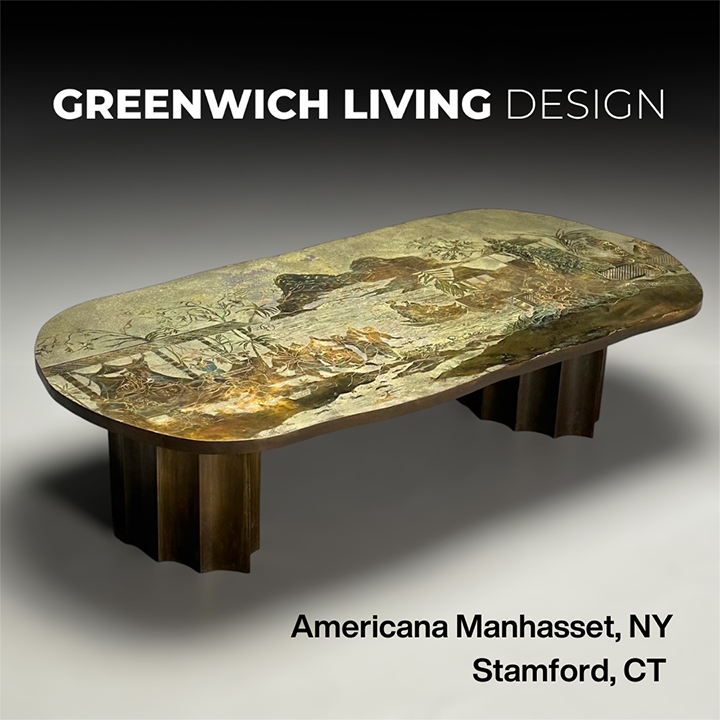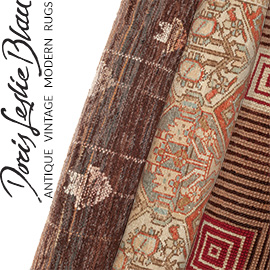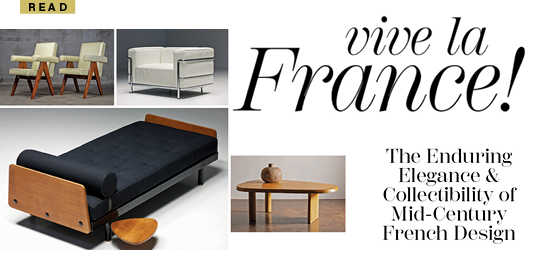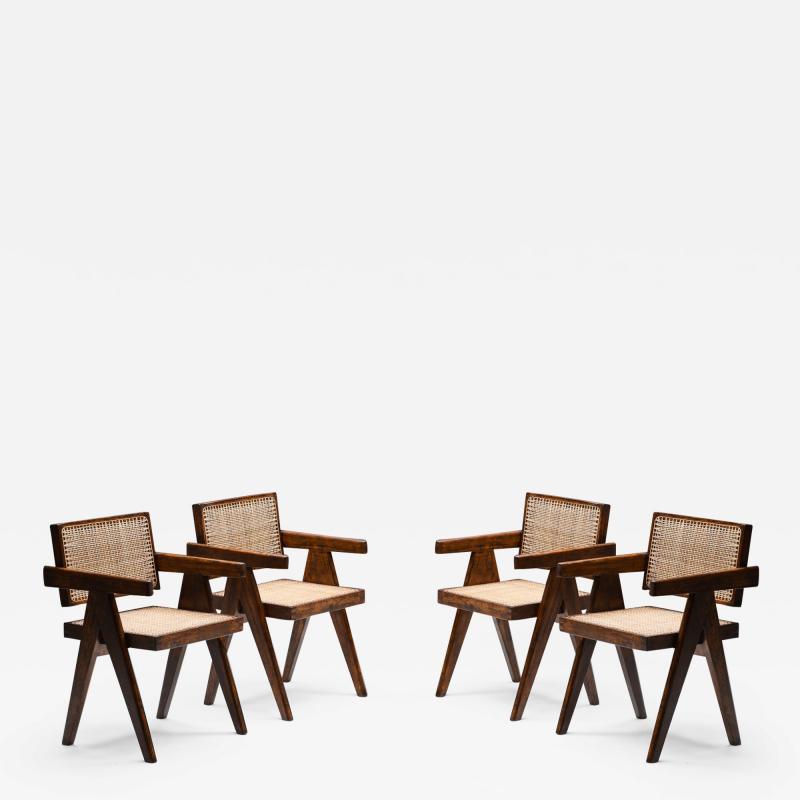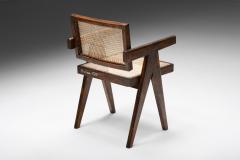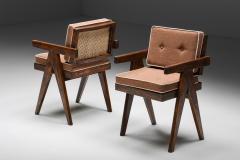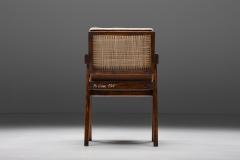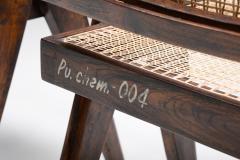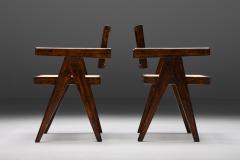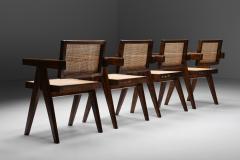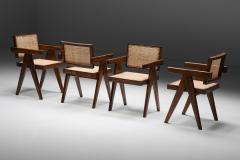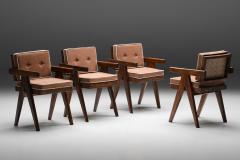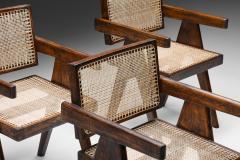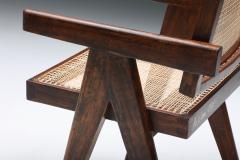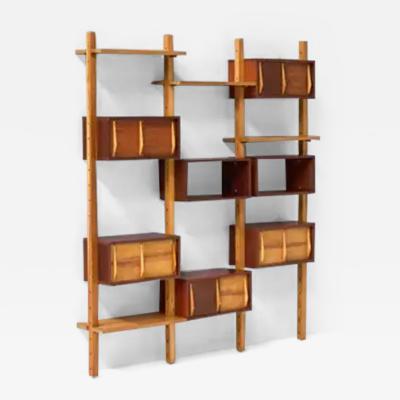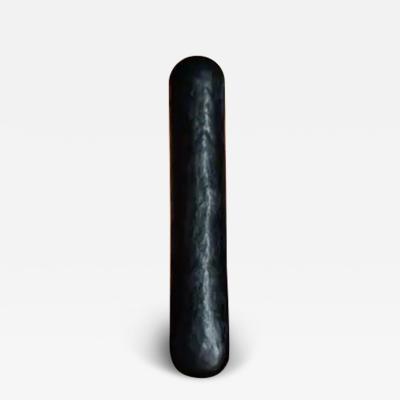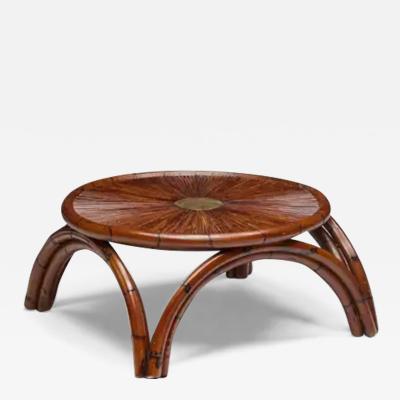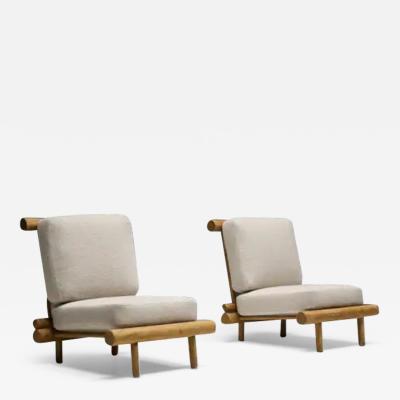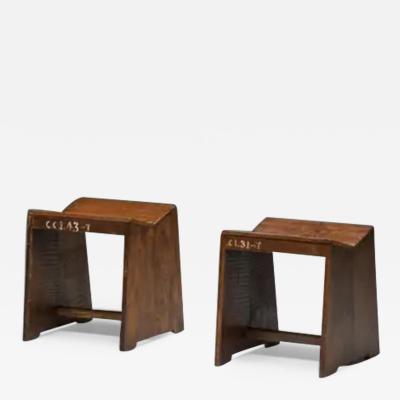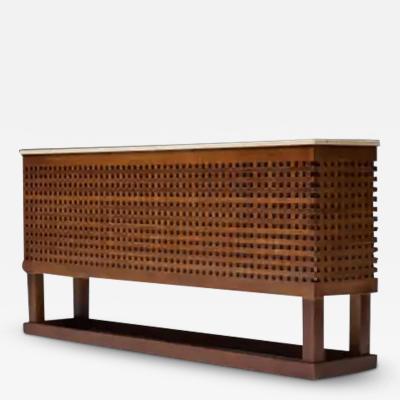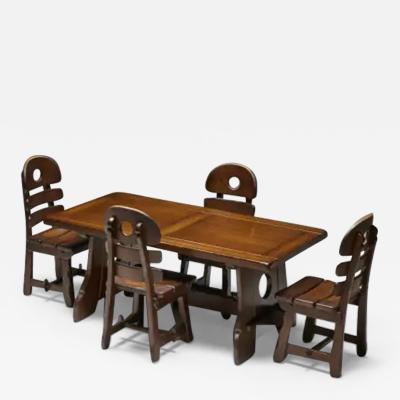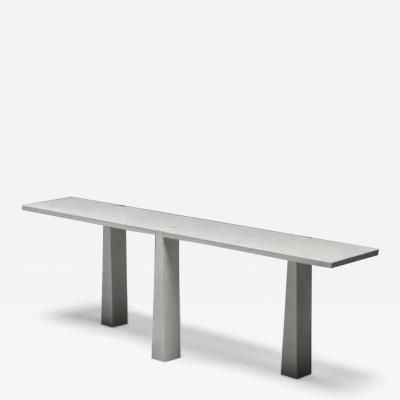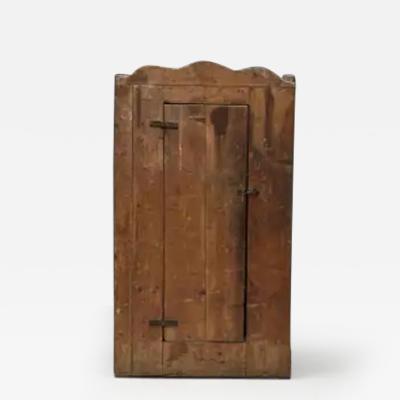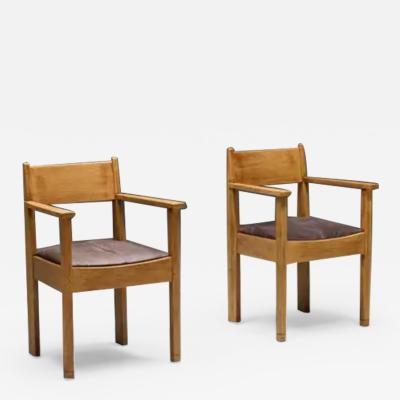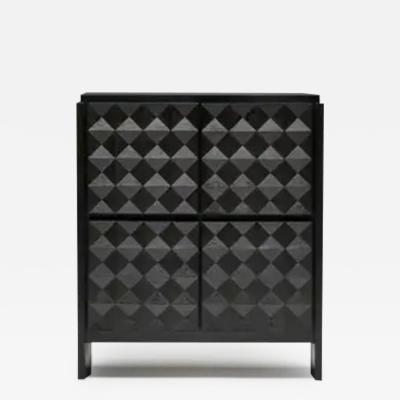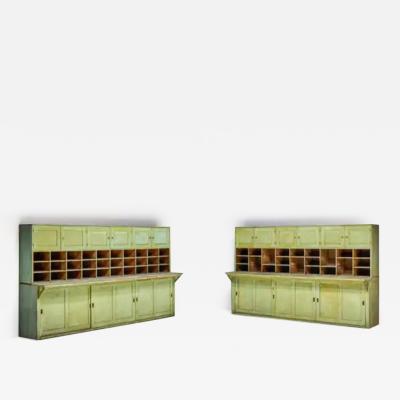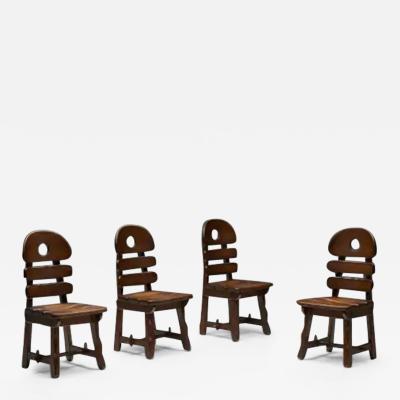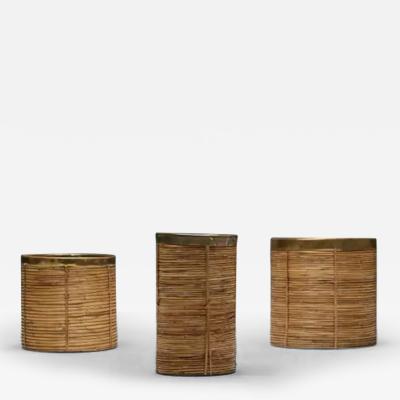Office Cane Chairs by Pierre Jeanneret - 1955
-
Description
Iconic "Office Cane Chairs" created by Pierre Jeanneret in the 1950s for the city of Chandigarh in India, the utopian city designed by his cousin Le Corbusier. Made of solid sisso (Indian rosewood) with seat and backrest in braided canework. Tilted backrest and asymmetric flat profiled "compass"-type double side leg assembly, with the legs connected by a crosspiece and supporting the armrests. Slanted, slightly curved backrest, separate from the seat. The seemingly floating back as well as the "compass"-type legs are very typical for this office chair. These specific features make the design even more powerful and interesting. The cushions allow you to increase your comfort and to sit a little higher and straighter. Ideal when working at your desk.
The office chair was part of the furniture from the administrative buildings of Chandigarh. It's a true icon, one of the most famous pieces of all Chandigarh items. Jeanneret’s designs stand out for their essential forms and simple materials, a balance between modern European ideals and traditional Indian spirit.
Another interesting and nowadays relevant fact about these and other Chandigarh chairs is that all pieces were made from the trees which were logged because the city was built, so an early adaptation of ecological thinking.
We have four office chairs available, priced per piece. -
More Information
Documentation: Documented elsewhere (exact item) Origin: India Period: 1950-1979 Materials: Rosewood & Cane. Creation Date: 1955 Styles / Movements: Modern, Mid Century Incollect Reference #: 561095 -
Dimensions
W. 20.67 in; H. 32.28 in; D. 21.26 in; W. 52.5 cm; H. 82 cm; D. 54 cm; Seat H. 17.91 in; Seat H. 45.5 cm;
Message from Seller:
Goldwood is an eclectic furniture and decoration boutique based in Antwerp, Belgium. Founded by Boris Devis, the store features a stunning collection of high-end 20th century items, offering an exciting mixture of luxurious and decorative pieces that range from classic designs by the likes of Tobia Scarpa and Wim Rietveld, to antique pieces by unknown designers.




